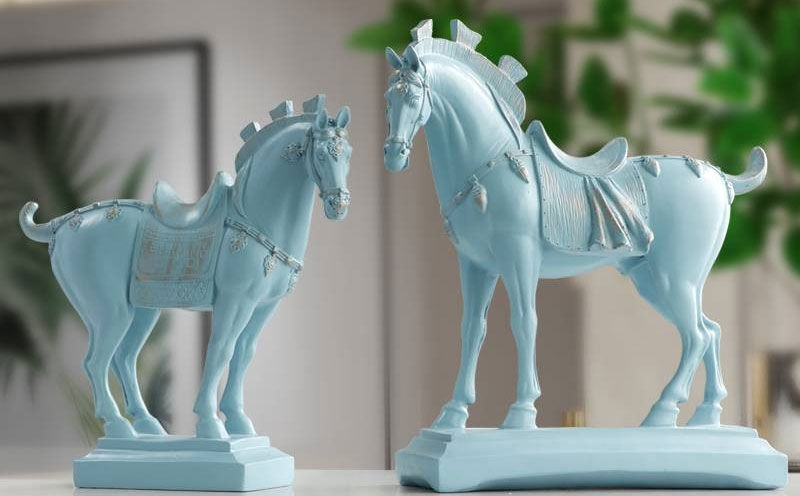
Many Muslims believe that they are not allowed to listen to music and sing. However,
- there is no such law in the Quran
- this belief originates from the hadith which is not God’s law
- God forbids judging by anything other than the Quran (6:114, 45:6, 68:36-38)
- God forbids inventing false laws in the name of God (5:87, 16:116)
- Whoever judges by other than the Quran is a disbeliever (kafir) (5:44)
Prophet David was given the Psalms (Zabur) which consists of 150 hymns or songs including lamentations, songs of thanksgiving, hymns of praise, wisdom psalms, royal psalms, and others of mixed composition.
| إِنَّا أَوْحَيْنَا إِلَيْكَ كَمَا أَوْحَيْنَا إِلَىٰ نُوحٍ وَالنَّبِيِّينَ مِن بَعْدِهِ ۚ وَأَوْحَيْنَا إِلَىٰ إِبْرَاهِيمَ وَإِسْمَاعِيلَ وَإِسْحَاقَ وَيَعْقُوبَ وَالْأَسْبَاطِ وَعِيسَىٰ وَأَيُّوبَ وَيُونُسَ وَهَارُونَ وَسُلَيْمَانَ ۚ وَآتَيْنَا دَاوُودَ زَبُورًا |
| Indeed, We have revealed to you, [O Muhammad], as We revealed to Noah and the prophets after him. And we revealed to Abraham, Ishmael, Isaac, Jacob, the Descendants, Jesus, Job, Jonah, Aaron, and Solomon, and to David We gave the Zabur (book of Psalms). (4:163) |
It is well attested within Jewish tradition, that the psalms were sung in front of the Tabernacle and subsequently in the reign of Prophet Solomon (pbuh), they were sung from the steps of the Temple when it was completed.
According to verse 34:10, the mountain and birds sang in an echoed manner (Arabic: awwibi).
| وَلَقَدْ آتَيْنَا دَاوُودَ مِنَّا فَضْلًا ۖ يَا جِبَالُ أَوِّبِي مَعَهُ وَالطَّيْرَ ۖ وَأَلَنَّا لَهُ الْحَدِيدَ |
| And We certainly gave David from Us bounty. [We said], “O mountains, repeat / echo [Our] praises with him, and the birds [as well].” And We made pliable for him iron, (34:10) |
According to verse 21:79, the mountains and birds praised God in a raised voice (Arabic: yusabbihna) along with David.
| فَفَهَّمْنَاهَا سُلَيْمَانَ ۚ وَكُلًّا آتَيْنَا حُكْمًا وَعِلْمًا ۚ وَسَخَّرْنَا مَعَ دَاوُودَ الْجِبَالَ يُسَبِّحْنَ وَالطَّيْرَ ۚ وَكُنَّا فَاعِلِينَ |
| And We gave understanding of the case to Solomon, and to each [of them] We gave judgment and knowledge. And We subjected the mountains to celebrate Our praise, along with David and [also] the birds. And We were doing [that]. (21:79) |
Although the chanting of the Psalms of prophet David was sung to glorify God, this still doesn’t imply any prohibition on any other type of music or singing. Of course, keeping with the spirit of the Quran, one would understandably agree that listening or singing music that is indecent should be considered inappropriate and unacceptable. However, this does not equate to prohibiting all music or singing.
Related articles
- Proof Muslim Women Don’t Have to Cover Their Hair
- Proof the Hadith is Not Valid Islamic Law
- Muslims Are Performing the Hajj Wrong
- Muslims Are Wrong About Zakat
- Lailat Al-Qadr Is Not What You Think It Is
- Most Muslims Start & End Fasting At the Wrong Time
- Islamic Misconceptions About the Call to Prayer (Adhaan)
- Most Muslims Are Wrong About Various Aspects of Prayer
- Islamic Ablution (Wudhu) Is Simpler Than Many Muslims Think
- Muslims Don’t Need to Perform Ablution (Wudhu) Before Touching the Quran
- Deferring Matters of Islamic Law to Religious Scholars Is Not Permissible. Studying and Understanding the Quran is Required.
- Proof That the Quran Is Complete and That the Hadith Books Are Not Needed
- Prayer Among Jews, Christians, and Muslims – A Quranic Analysis
- The Testimony (Shahadah) to Convert to Islam is Inaccurate
- Categories of People According to the Quran
- Jews and Christians Are Actually Muslims
- Abraham, Not Muhammad, Was the Founder of Islam
- Jewish, Christian and Islamic Scriptures
- The Fallacy That Descendants of Prophet Muhammad Are Superior to Everyone Else
- Islamic Prophets, Messengers & Scriptures
- What is God’s Name – A Quranic Analysis
- Aliens Do Exist – A Quranic Analysis
- Most Muslims Are Asian, Not Arab
- Proof That Relatives (Wives, Children, Descendants, etc) of Islamic Prophets, Including Muhammad, Are Not Automatically Righteous
- There Is No Punishment for Blasphemy in Islam
- Proof That Arabic is Not a Holy or Superior Language
- Proof That Prophet Muhammad Is Not Exclusive or Superior to Other Prophets
- Muslims (Submitters) and Mu’mins (Believers) Are Not the Same Thing
- Most Jews, Christians, and Polytheists Are Not Infidels (Kafir)
- There Is No Quranic Proof That Zamzam Water Is Blessed Holy Water
- Muslims Are Not Allowed To Force Others To Practice Islam. So Why Do Muslims & Islamic Governments Keep Doing It?
- If You Are a Sunni or Shia Muslim, Then You’ve Violated Islamic Law
- Contrary to Extremist Belief, Muslims Are Allowed To Sing and Listen to Music
- Muslims Are Allowed To Have Statues and Photos of People in Their Homes
- Dogs Aren’t Impure. Muslims Are Allowed to Have Pet Dogs.
- Muslims Are Allowed to Pay Interest, e.g. on a Car or Home Loan
- Prophet Muhammad Was Not Illiterate. He Could Read and Write.
- Jesus is Dead & He Ain’t Comin’ Back – A Quranic Analysis
- Many Muslims Are Wrong About Getting Help From Others on the Day of Judgment
- Wills and Inheritance Law According to the Quran
- Most Muslims Are Wrong About Halal Food
- Circumcision Is Not Required Among Muslim Boys / Men
- Muslim Women Are Not Exempt From Congregational Friday Prayers
- Muslim Women Are Not Exempt From Fasting, Praying, etc During Menstruation
- The Quran Doesn’t Support a Strictly Vegetarian Diet
- Summary of the Quran
- Summary of the Quran 2
- إثبات أن الحديث ليس شرعاً إسلامياً صالحاً
- إثبات أن النساء المسلمات لسن بحاجة لتغطية شعرهم
- Bukti Hadits Tidak Valid Hukum Islam
- Kekeliruan Bahwa Keturunan Nabi Muhammad Lebih Unggul Dari Semua Orang Lain
- Bukti Wanita Muslim Tidak Harus Menutup Rambutnya Dengan Hijab




















